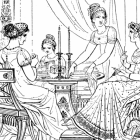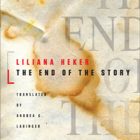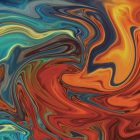A Writer’s Envy, Part I: Lost in the Schoolhouse

Fresh from the AWP conference in Denver, we are back to the blog. This week, we welcome our new Get Behind the Plough bloggers, chosen from the pages of the Spring 2010 Ploughshares. Our Winter 2009-10 contributors were all poets, so we’re glad to add fiction voices to the mix this go-around. Starting this week, Scott Nadelson will blog Mondays, Bridget Lowe Wednesdays, and Carol Keeley Fridays.
We hope you enjoy our new bloggers. They value your feedback and discussion in the comments.
First at bat: Scott Nadelson, who has given us the story “Dolph Schayes’s Broken Arm” (you can currently read it on our website). When he’s not blogging for us, Scott is preparing a new fiction collection, Aftermath, which Hawthorne Books will publish next spring.
“A Writer’s Envy, Part I: Lost in the Schoolhouse”
Guest post by Scott Nadelson
Envy, I’ve always believed, has been undervalued as a motivating emotion, along with bitterness and spite. How in the world would I have managed to get a story into a prestigious literary journal–and now be writing for its blog–if I hadn’t envied, obsessively and desperately, all those brilliant writers who’d been published in it before?
The current object of my envy–bitter, spiteful person that I am–is the visual artist. This has largely to do with the fact that my wife and I recently returned home from a trip to New York City, where we took in as many exhibits of contemporary art as we could in three days. This is something we try to do every year or so, as a way to make up for living in the far-flung provinces, where art exhibits tend to feature bronzed salmon and paintings of elk.
Walking into a contemporary art museum in New York City, the writer is faced with no shortage of things to envy. What fun these artists seem to be having! What play! And with actual physical objects, no less! Take, for example, P.S. 1 Contemporary Art Center in Queens. The building itself is a fiction writer’s dream: a two-hundred-year-old brick schoolhouse, with Gothic windows and a many-peaked roof, and a prehistoric-looking boiler room in the basement.
It’s not hard to imagine the building as a setting for a story or novel, filled with repressed teachers and malnourished children and a sadistic principal, and one brave girl who overcomes the hardships of her hardscrabble life to win the citywide multiplication and division championship, whereby she lifts the spirits of her classmates and brings new dignity to her family and frees her teachers from their repression and melts the frozen heart of her sadistic principal.
But the visual artist doesn’t have to imagine the building, or come up with language to evoke its façade or the feeling of walking through its hallways, or construct a drama to capture the essence of its history. Instead, she simply inhabits the building–as the video artist Pipilotti Rist has done with her piece Selbstlos im Lavabad (Selfless in the Bath of Lava) (1994), a permanent installation in the museum lobby.
Just after you walk in the front door, a tiny figure, surrounded by flames, calls to you through a silver-dollar-sized hole in the floor. She’s speaking German, I think, or some other language I don’t understand at all. But not understanding the words doesn’t lessen the piece’s impact: I don’t know if she’s pleading with me or warning me, and as a result I always walk away from the piece both amused by its whimsy–the figure is so tiny, after all–and unexpectedly troubled by the urgency of the voice.
Around the corner from Rist’s piece is Leandro Erlich’s new installation, Swimming Pool (2008). Step onto a platform and you’re looking down into… you guessed it, a swimming pool. But wait! Stand there long enough, and suddenly a person appears at the bottom of the pool, walking around without any apparent trouble breathing: the “pool” turns out to be only a shallow film of water suspended on a sheet of glass.
Erlich, a young Argentinean artist, is, according to P.S.1’s website, “known for installations that seem to defy the basic laws of physics and befuddle the viewer, who is introduced into jarring environments that momentarily threaten a sense of balance or space.” He creates work that is disorienting and illusionary; or rather, he creates work that creates a disorienting and illusionary experience for the viewer.
And this is where my envy really kicks in. Not only is Erlich exactly my age and already an international art sensation–about which I am particularly bitter and spiteful–but he has the ability to create experience. Not imagined experience. Not simulated experience evoked by the abstraction of language. Actual experience, with actual people. The very idea fills me with seething jealousy.
Language, of course, and the imagination are all that I have to work with. This is my lot as a writer, and I should be grateful that I’m able, on occasion, to evoke even a semblance of imagined experience that someone else might also want to experience, even through the indirect muddle of words. I could have chosen to be a visual artist (if I’d had any visual ability, which I don’t) or a musician (ditto), but I decided to make story my medium, and I should simply accept the limitations of my material.
But I don’t. Oh no. Instead, I envy. Deeply. And here is where envy becomes a powerful force. I look at Rist’s video and Erlich’s swimming pool and think, I want to do that. And because I know I won’t (can’t) actually make a video or construct an installation, I have to think instead about how I might attempt to infuse my own writing with what I find so powerful in visual artists’ work. Directness. Simplicity. Disorientation. Emotional complexity. Ambiguity. Play.
It may not be possible for me to do what Rist and Erlich do. I’ll always have to reckon with the limitations of language and story. But envy is a challenge, a way of keeping myself honest, of pushing myself to hone my skills and expand my repertoire, of questioning the conventions and restrictions of my medium that I sometimes take for granted.
I sit down to work, and I can’t help but think about those elements of the visual artist’s world to which I don’t have access. A physical space. Objects. Live audience. Experience. And then I sift through the muddle of words and imagination and try to get as close as I can.
Photograph sources: 1. Urban75.org. 2. About.com. 3. Pipilotti Rist. 4. P.S.1. 5. Leandro Erlich.
This is Scott‘s first post for Get Behind the Plough.



